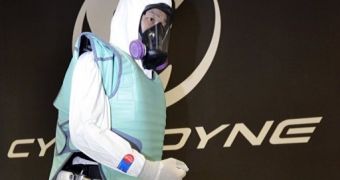There aren't many things that can be worn in order to protect against radiation, but it looks like the problem of weight has been mostly solved through the use of a certain other invention.
The HAL (Hybrid Assistive Limb) exoskeleton wasn't initially invented with radiation protection in mind.
This didn't stop it from becoming a key part in the creation of a suit that defends against that very thing though.
The exoskeleton, initially devised for people afflicted with muscle diseases, has been incorporated into something that can only be defined as a robotic suit.
The main role of HAL is to support the weight of the tungsten that anti-rad suits are made of.
Normally, a tungsten suit weighs up to 132 pounds, which is a lot (59.87 kilograms).
As such, workers can't wear them for long periods of time, especially not without growing very tired, and fatigued workers are definitely not something anyone wants around a nuclear site.
With HAL handling the weight, however, not just plants, but hazardous sites will be easier to tread.
“This new type of HAL robot suit supports the weight of tungsten-made protective clothing and enables their wearers to work on the site without feeling the burden,” the company said in a statement.
“It is hoped that this will reduce risks of working under harsh environments and contribute to early restoration operations by humans in the wake of disasters.”
People familiar with the natural disaster that hit Japan back on March 10 will no doubt know also of the Fukushima reactor meltdown.
Even now, the site is filled with radioactive emissions strong enough that Fukushima easily qualifies as the biggest nuclear disaster since Cernobyl in 1986.
Containment efforts have been going on since then and will keep on going, perhaps more smoothly now that the HAL-based robosuits are on the way (it hasn't been decided when the suit starts being used).

 14 DAY TRIAL //
14 DAY TRIAL //